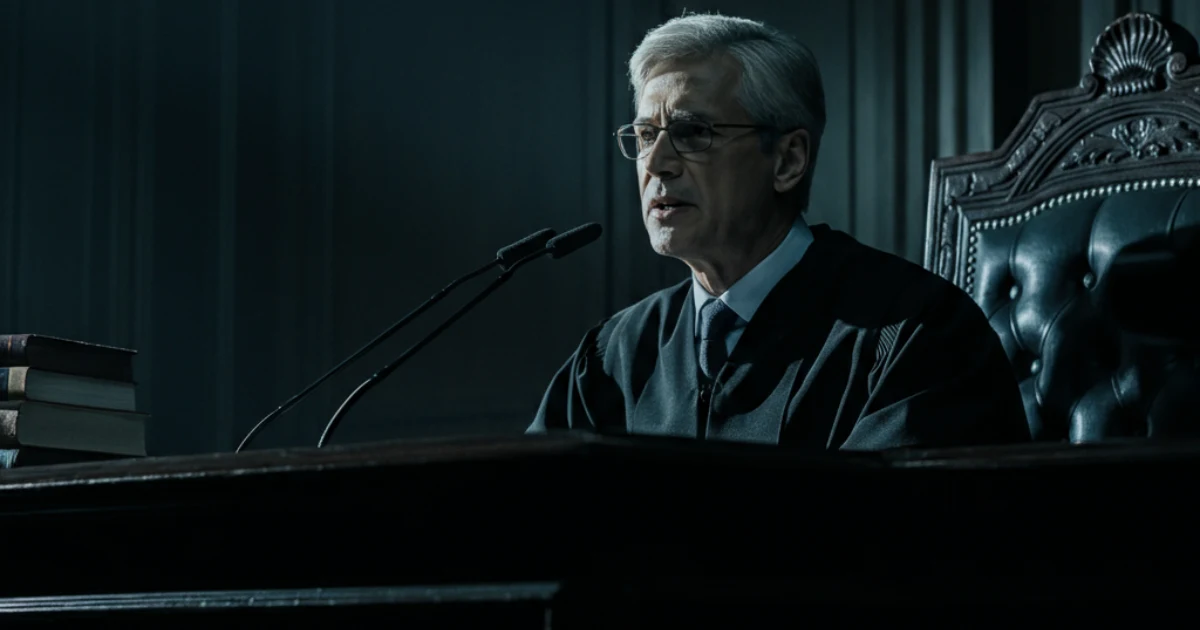Judge Lawrence Vandyke has stirred discourse with a recent video criticizing the Ninth Circuit Court’s decision on California’s magazine size restrictions. The video sheds light on a contentious legal issue that has sparked debates on constitutional rights, public safety, and the balance of judicial power.
This blog explores the background of the California magazine ban, Judge Vandyke’s pointed criticism, and the broader legal and public discussions stemming from this case. Whether you’re a legal professional, gun rights advocate, or simply interested in constitutional debates, this post will provide nuanced insight into a divisive issue.
Background on the California Magazine Ban
California’s magazine ban, formally known as Proposition 63, prohibits the possession of firearm magazines that hold more than ten rounds of ammunition. Approved by voters in 2016, the law aimed to reduce gun violence, arguing that high-capacity magazines enable mass shootings by allowing shooters to fire more rounds without reloading.
The law faced multiple legal challenges, with opponents arguing it infringes on Second Amendment rights. After years of legal battles, the Ninth Circuit Court recently upheld the ban, ruling it a reasonable measure to address public safety concerns.
This decision provoked widespread reactions, with critics claiming it sets a dangerous precedent for further restrictions on constitutional rights and supporters praising it as a step toward curbing gun violence. Judge Vandyke’s video entered this fray, offering a critique aimed squarely at the reasoning behind the ruling.
Judge Vandyke’s Criticism
Judge Lawrence Vandyke, a Trump-appointed judge on the Ninth Circuit Court of Appeals, is no stranger to controversy, and his latest video is no exception. Using pointed rhetoric and a sharp critique of the court’s decision, Judge Vandyke outlined his objections to the magazine ban ruling.
Constitutional Concerns
One of Judge Vandyke’s primary arguments is that the ruling undermines the Second Amendment by allowing excessive regulation of firearms. He emphasizes that the right to bear arms, as enshrined in the Constitution, should not be subject to restrictive, state-imposed limits, such as bans on high-capacity magazines.
Questioning Efficacy
Judge Vandyke also criticized the effectiveness of the magazine ban as a public safety measure. Drawing on data and case studies, he suggested that such regulations do little to prevent gun violence and instead burden law-abiding citizens.
Broader Implications
Beyond this specific case, Judge Vandyke expressed concerns about the precedent the ruling could set. He argued that upholding Proposition 63 could pave the way for further erosion of constitutional rights by allowing courts to prioritize subjective safety concerns over fundamental freedoms.
While Judge Vandyke’s criticism resonates with many Second Amendment advocates, it also raises significant legal questions about balancing constitutional rights with public safety.
Legal Analysis of the Issues Raised
Judge Vandyke’s critique touches on some of the most complex and debated areas of constitutional law. At its core, this case revolves around the interpretation of the Second Amendment and the judiciary’s role in mediating between individual rights and state interests.
The Second Amendment Debate
One of the key legal challenges in this case is determining the scope of the Second Amendment. Does the “right to bear arms” include high-capacity magazines? While gun rights advocates argue that it does, proponents of the ban contend that reasonable restrictions are permissible to safeguard public safety.
Judge Vandyke’s argument aligns with the “text, history, and tradition” approach to constitutional interpretation. This framework suggests that laws regulating firearms should align with historical precedents, which, according to Vandyke, would not support bans on high-capacity magazines.
Public Safety vs. Constitutional Rights
Another critical aspect of the Ninth Circuit’s ruling is its reliance on the state’s interest in reducing gun violence. The court argued that the magazine ban is a narrowly tailored solution that addresses specific safety concerns. Critics, including Vandyke, argue that this reasoning prioritizes perceived safety over clearly defined constitutional protections.
Potential Legal Challenges
The issues raised in this case are far from resolved. The U.S. Supreme Court has increasingly signaled an interest in Second Amendment cases, particularly those involving questions of scope and precedence. Judge Vandyke’s criticism could serve as a rallying cry for further appeals, potentially bringing this case to the nation’s highest court.
Reactions from Groups and Experts
The responses to Judge Vandyke’s video and the Ninth Circuit ruling have been as polarized as the larger gun control debate in America.
Supporters of the Ruling
Gun control advocates and lawmakers backing Proposition 63 praised the Ninth Circuit’s decision as a victory for public safety. Organizations like Everytown for Gun Safety argue that high-capacity magazines exacerbate the lethality of mass shootings, and regulations like California’s ban are essential for preventing future tragedies.
Critics of the Ruling
On the other side, Second Amendment advocacy groups, including the National Rifle Association (NRA) and the Firearms Policy Coalition, have slammed the decision, echoing Judge Vandyke’s concerns. They argue that restrictions like these unfairly target law-abiding gun owners without addressing the root causes of gun violence.
Public Reactions
Public opinion remains deeply divided along ideological lines. Many citizens see this case as emblematic of the broader conflict between individual freedoms and collective safety. Social media has amplified these debates, with users on both sides passionately defending their positions.
What This Means for the Future of Gun Rights and Regulation
The Ninth Circuit ruling on California’s magazine ban and Judge Vandyke’s critique highlight the complex interplay between constitutional rights, public safety, and judicial authority.
This case could have far-reaching implications for gun laws in the United States, particularly if the U.S. Supreme Court ultimately weighs in. For now, the debate is far from over, but it has sparked important conversations about the balance between individual liberties and societal well-being.
The controversy reminds us of the enduring relevance of constitutional interpretation and the judiciary’s role in shaping the future of American law. Whether you agree with Judge Vandyke or the Ninth Circuit, one thing is clear – the questions raised by this case have implications that will reverberate for years to come.



